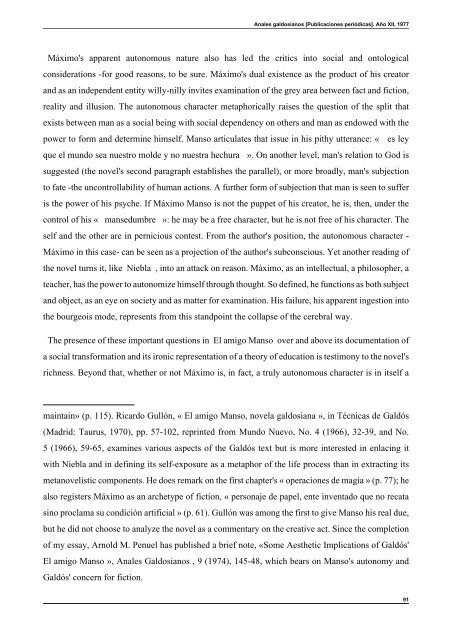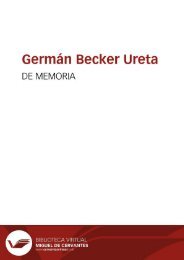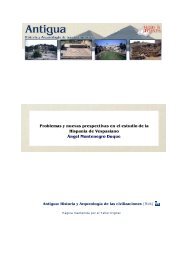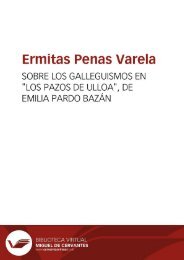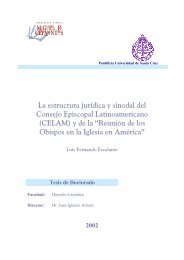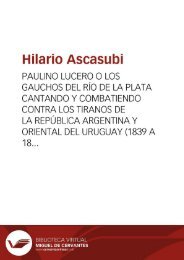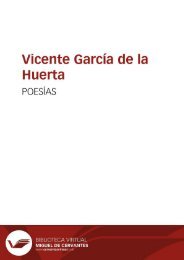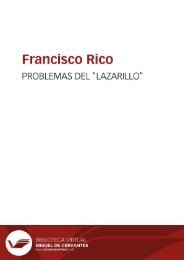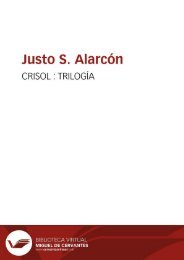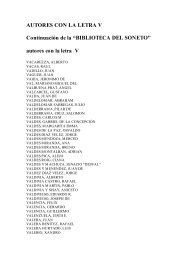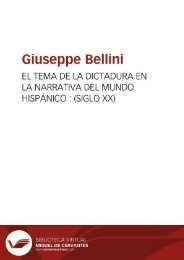You also want an ePaper? Increase the reach of your titles
YUMPU automatically turns print PDFs into web optimized ePapers that Google loves.
Anales galdosianos [Publicaciones periódicas]. Año XII, 1977<br />
Máximo's apparent autonomous nature also has led the critics into social and ontological<br />
considerations -for good reasons, to be sure. Máximo's dual existence as the product of his creator<br />
and as an independent entity willy-nilly invites examination of the grey area between fact and fiction,<br />
reality and illusion. The autonomous character metaphorically raises the question of the split that<br />
exists between man as a social being with social dependency on others and man as endowed with the<br />
power to form and determine himself. Manso articulates that issue in his pithy utterance: « es ley<br />
que el mundo sea nuestro molde y no nuestra hechura ». On another level, man's relation to God is<br />
suggested (the novel's second paragraph establishes the parallel), or more broadly, man's subjection<br />
to fate -the uncontrollability of human actions. A further form of subjection that man is seen to suffer<br />
is the power of his psyche. If Máximo Manso is not the puppet of his creator, he is, then, under the<br />
control of his « mansedumbre »: he may be a free character, but he is not free of his character. The<br />
self and the other are in pernicious contest. From the author's position, the autonomous character -<br />
Máximo in this case- can be seen as a projection of the author's subconscious. Yet another reading of<br />
the novel turns it, like Niebla , into an attack on reason. Máximo, as an intellectual, a philosopher, a<br />
teacher, has the power to autonomize himself through thought. So defined, he functions as both subject<br />
and object, as an eye on society and as matter for examination. His failure, his apparent ingestion into<br />
the bourgeois mode, represents from this standpoint the collapse of the cerebral way.<br />
The presence of these important questions in El amigo Manso over and above its documentation of<br />
a social transformation and its ironic representation of a theory of education is testimony to the novel's<br />
richness. Beyond that, whether or not Máximo is, in fact, a truly autonomous character is in itself a<br />
maintain» (p. 115). Ricardo Gullón, « El amigo Manso, novela galdosiana », in Técnicas de <strong>Galdós</strong><br />
(Madrid: Taurus, 1970), pp. 57-102, reprinted from Mundo Nuevo, No. 4 (1966), 32-39, and No.<br />
5 (1966), 59-65, examines various aspects of the <strong>Galdós</strong> text but is more interested in enlacing it<br />
with Niebla and in defining its self-exposure as a metaphor of the life process than in extracting its<br />
metanovelistic components. He does remark on the first chapter's « operaciones de magia » (p. 77); he<br />
also registers Máximo as an archetype of fiction, « personaje de papel, ente inventado que no recata<br />
sino proclama su condición artificial » (p. 61). Gullón was among the first to give Manso his real due,<br />
but he did not choose to analyze the novel as a commentary on the creative act. Since the completion<br />
of my essay, Arnold M. Penuel has published a brief note, «Some Aesthetic Implications of <strong>Galdós</strong>'<br />
El amigo Manso », Anales Galdosianos , 9 (1974), 145-48, which bears on Manso's autonomy and<br />
<strong>Galdós</strong>' concern for fiction.<br />
91


